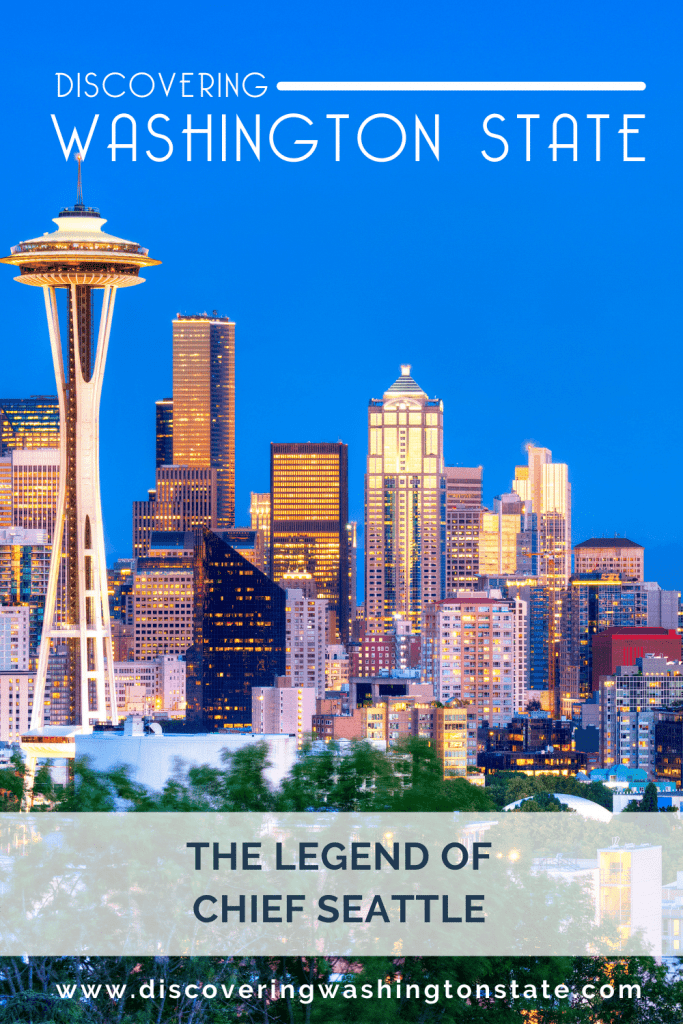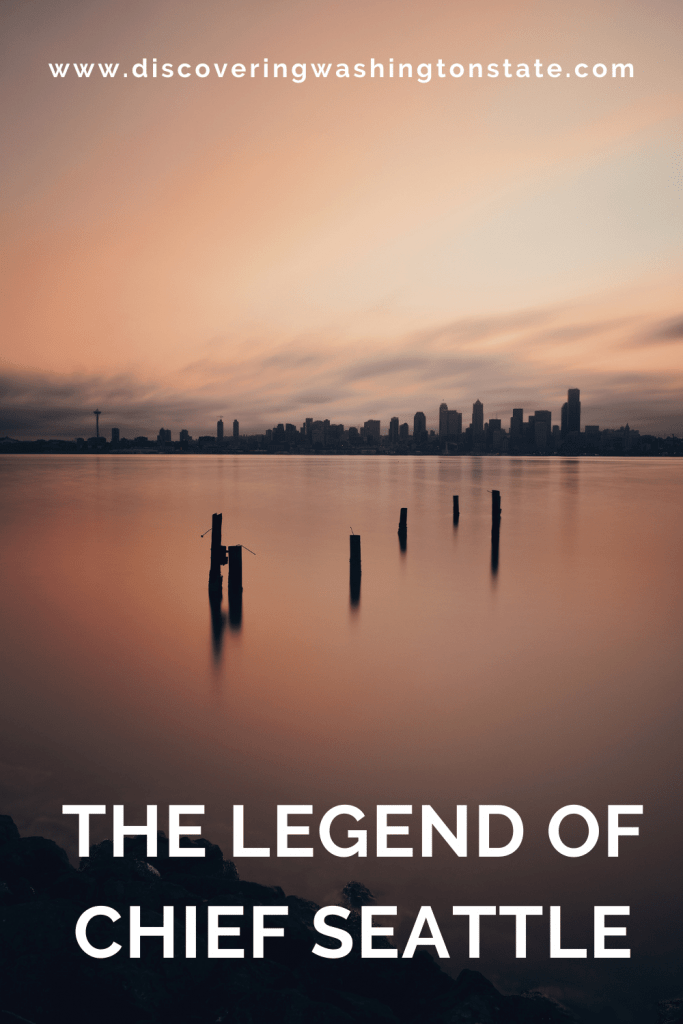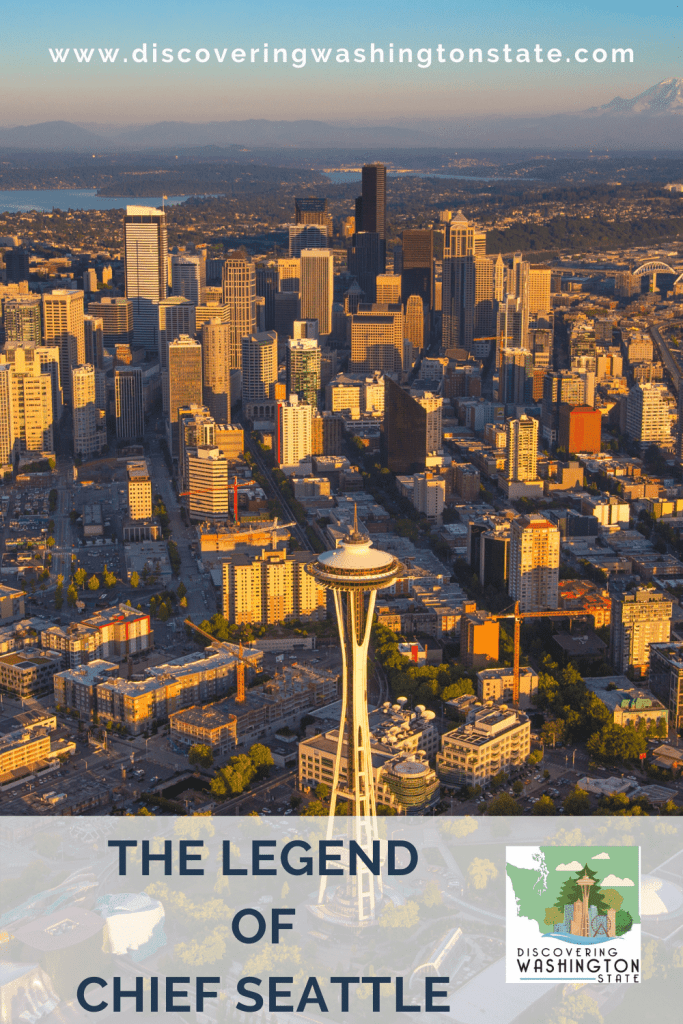When pioneers led by Arthur Denny of the famous “Denny Party” stepped off the schooner Exact in the area near West Seattle (now known as Alki Beach), they had dreams of creating a prosperous new life. Denny had sent his younger brother David ahead in September of 1851 to scout the area and report back to him. He and a group of other adults were waiting in Portland for the report.
David’s exploration of the Duwamish river led him to believe it was the right place to set up homesteads. But, he wasn’t the only settler to think so. Other parties had discovered the same land and had already made claims.
When Arthur arrived in November, he decided to explore further and chose a different location in which to settle. By April 1852, Arthur discovered Elliot Bay and moved most of the original group to its eastern shore. The group settled in the area that today spans from Pioneer Square to Belltown, calling their settlement Duwamps.
A Settlement Changes Its Name
Doc Maynard, a doctor from Ohio, had also made his way to Elliot Bay in April 1852. His medical practice folded back home, so he sold everything and gave the proceeds to his wife. Maynard left his wife and Ohio to find gold in California.
His plans changed, and he settled in the area near Puget Sound. Maynard soon saw the potential for prosperity because of the incredible natural resources, especially timber. He decided to set up businesses to bring commerce into the newly settled area and became Duwamps first merchant. Maynard encouraged other entrepreneurs like Henry Yesler to set up Puget Sound’s first steam-powered sawmill on Elliot Bay.
Maynard strategically befriended a local Indian Chief who helped him navigate the tense relationship with local tribes. Their close connection and sincere friendship led him to ask his neighbors to honor Chief Si’ahl and name the village after him. The settlers agreed, and plats for the town were filed on May 23, 1853, with the new name of Seattle.
Chief Si’ahl (Chief Seattle)
Who was Chief Si’ahl (also called Chief Seattle or Chief Sealth)? Why did he become a legend not only in Washington State but as a symbol of the environmental movement worldwide?
Chief Si’ahl was born in the 1780s in a village on the Black River, an area now known as Kent. His father, Shweabe, was a leader of the Suquamish tribe. His mother, Sholeetsa, was a member of the Duwamish tribe and the niece of a Duwamish leader. It was a custom for tribes to intermarry to create peace, and his mother’s lineage positioned Si’ahl to become a leader himself.
The Puget Sound Indians did not have chiefs per se, just leaders for times of peace and for a crisis. Chief Seattle’s prowess as a warrior, orator, and a diplomat, led him to greatness.
Si’ahl Emerges as a Leader
Si’ahl’s fascination with European people started when he was around the age of six. It is written that in 1792 he remembered seeing Captain George Vancouver’s ships anchored off of Bainbridge Island.
As he grew up, he showed great courage when faced with warring tribes in the area. He was tall, handsome, and had a powerful voice. When he spoke, his tribe listened. Because of his intelligence and bravery, he became the leader of six local factions.
In the 1830’s he was so fierce that he frightened Hudson Bay Company’s clerks, who nicknamed him the “Big Guy.” He was known as a war leader who led terrifying raids, but his tribesmen knew him as a kind and generous man with a sense of humor.
Chief Seattle adopted Catholicism and was baptized in 1848 after Jesuit missionaries introduced him to the faith. He took the name Noah and was so devout that he baptized his children and prayed every day. His religious choice was viewed by settlers as an indication that he wanted to cooperate and to understand them.
Chief Seattle continued his father’s legacy of being friendly toward the European and American settlers, but this warmth was not typical in the Puget Sound area. War broke out in 1855 when the White River Valley Tribe attacked the village of Seattle.
It was a time of crisis, but the Chief saw the future. He knew that the settlers would never stop coming, and he also knew that natives would probably – and sadly – lose their identity and land in the process. He had a dream of an integrated society where both natives and white people could prosper. Chief Seattle argued with other leaders that the prudent option was to keep the peace, even though those others might kill them off entirely. He urged a compromise and by 1856, the area tribes chose peace.
Governor Isaac Ingalls Stevens
President Franklin Pierce tasked Governor Stevens with gaining control over native lands (as Chief Seattle feared would happen).
Governor Stevens believed in Manifest Destiny and was searching for a place to build the transcontinental railroad. He wrote thirteen treaties, one of which was called the Treaty of Point Elliot. This treaty was a land settlement between the United States Government and the Native American tribes of Puget Sound and called for the Tribes to surrender over 13,000 acres of land and relocate. Chief Seattle had indeed been correct.
As the diplomat to the tribes, Stevens called a meeting on March 11, 1854, to discuss the terms of the treaty. He needed Chief Seattle’s signature on the treaty, along with the signatures of Duwamish, Suquamish, Snoqualmie, Snohomish, Lummi, Skagit, Swinomish (and others) tribal leaders.
The treaty guaranteed hunting and fishing rights and reservations for all the recognized tribes. During this meeting, Chief Seattle stood up and made a speech in his native Lushootseed language. Lushootseed was not spoken by many, and to understand it, it had to be translated into the Chinook language and then into English. Although it was not entirely clear what he said that day (at least to non-native speakers), Chief Seattle was persuasive and the The Point Elliot Treaty was signed on January 22, 1855.
A Speech That Changed Seattle
Chief Seattle’s speech was not transcribed when given. And since few people spoke Lushootseed or Chinook and English, any translation, no matter how well-intentioned, must be questioned as to its accuracy. Nonetheless, Dr. Henry A. Smith, who had been present at the meeting when Chief Seattle spoke, decided to publish a translation in the Seattle Sunday Star.
Published in 1887, Smith claimed he took sparse notes during the speech but used his recollections of the event to release the speech – even though it was 33 years later. He claimed he understood what the Chief was saying as he could speak Chinook and some of the other native language. When Henry Smith penned Seattle’s speech, many people believe that it reflected only the essence of what the Chief said, imbued with Smith’s poetic style of writing.
In the 1970s, writer Ted Perry changed the speech entirely, to reflect current day environmental issues for a film about conservation. Again, the speech appears to have been translated and adapted to fit particular purposes without regard to accuracy.
What Else Do We Know About Chief Seattle
Since the translation of Chief Seattle’s speech has undergone many changes we’ve lost proof of his meaning or the words of his most famous speech.
The most accurate information we have about his thoughts is an excerpt from what Chief Seattle said on January 21, 1855, when Governor Stevens arrived at Point Elliot to discuss the treaty. This can be found in the National Archives, Bureau of Indian Affairs section. An excerpt reads:
“Now, by this, we make friends and put away all bad feelings if we ever had any. We are the friends of the Americans. All the Indians are of the same mind. We look upon you as our father. We will never change our minds, but since you have been to see us, we will always be the same. Now! Now, do you send this paper.”
Chief Seattle died on June 6, 1866, at the age of around 80. He was survived by his wife Olahl, and seven of his eight children. His grave lies in a cemetery behind St. Peter’s Catholic Church in Suquamish on Washington’s Kitsap peninsula. The Suquamish Tribe honors Chief Seattle every year during the third week of August.
Save to your favorite Pinterest boards to learn more about Chief Seattle and to help plan your visit



